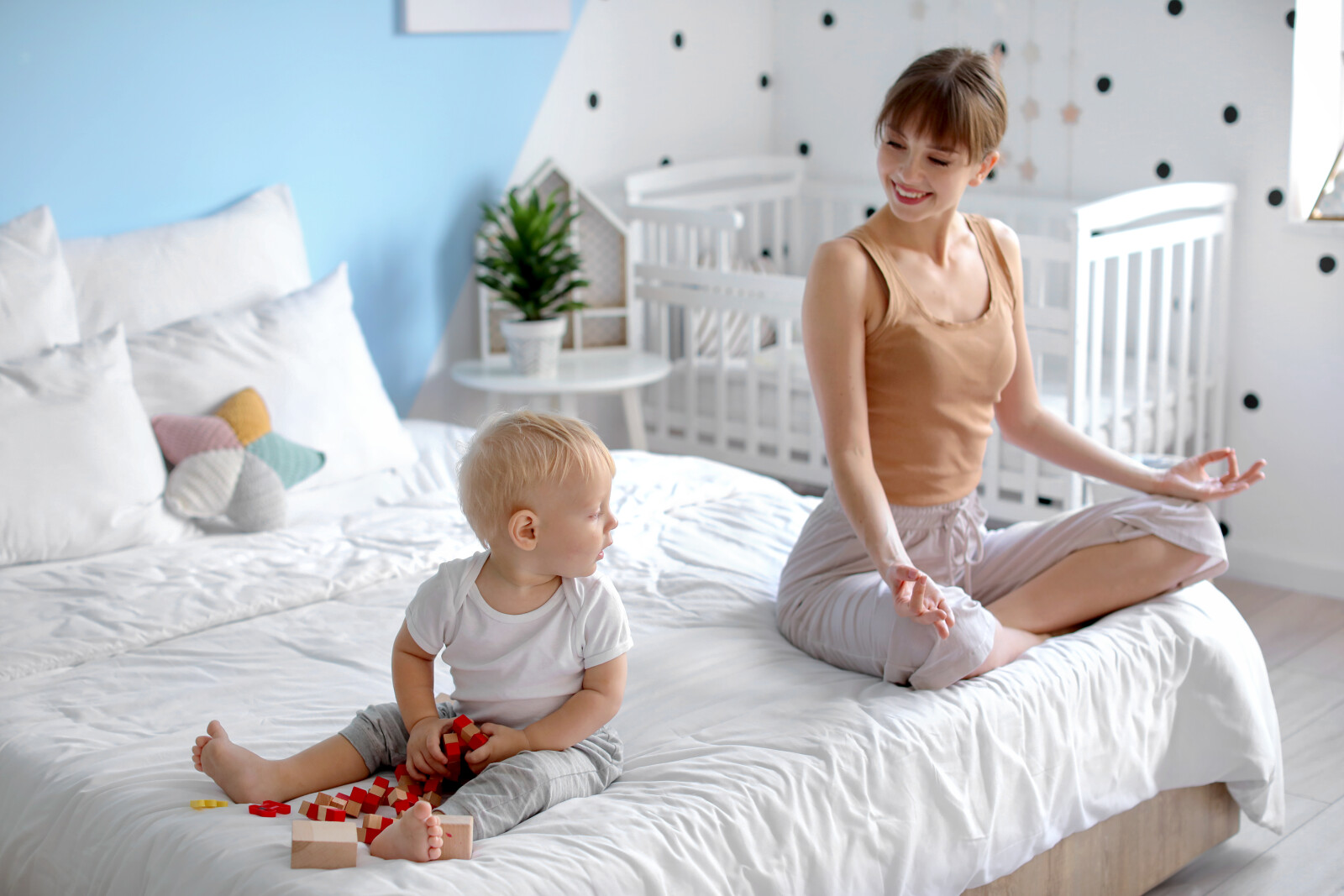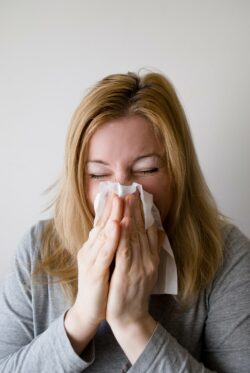Danger Lurks in Baby Cribs: Recalls and Lawsuits
This article explores the increasing safety concerns related to baby cribs and other nursery products, shedding light on the recalls, bans, and lawsuits associated with them. We discuss the risks of drop-side cribs, defective baby loungers, and improper bedding, and highlight the recommended safe sleep practices. We further investigate the categories of defective baby products, their real-life implications, and the legal recourse available for victims of such equipment, emphasizing on the role of the Consumer Product Safety Commission.

Key Takeaways
- Drop-side cribs have been linked to numerous infant injuries and fatalities, leading to sweeping recalls and a ban on their sale in the United States in 2011.
- Recalls remove faulty items from the market, while bans prohibit the sale of certain products outright, highlighting the need for proactive regulatory measures and safety standards.
- Lawsuits have been filed against manufacturers and retailers for selling dangerous crib bumpers despite knowing the risks, potentially resulting in significant financial penalties and stricter safety standards.
- Other nursery products such as high chairs and strollers also pose risks, emphasizing the importance of a comprehensive view of all childcare equipment for infant safety.
Understanding the Risks: Drop-side Crib Recalls
The current discussion examines the significant hazards associated with the use of drop-side cribs, emphasizing the importance of understanding the reasons behind their numerous recalls. Drop-side cribs, once a staple in many nurseries, have been linked to numerous infant injuries and fatalities, leading to sweeping recalls. The primary issue lies in the crib's design, wherein the moveable side, intended for easier access to the infant, can detach partially, creating a dangerous gap where a baby can become entrapped and suffocate. Furthermore, hardware malfunctions, such as loose screws or broken slats, exacerbate these risks. The impact of crib recalls has been substantial, prompting legislation changes and raising awareness about drop side crib dangers, ultimately leading to their ban in the United States in 2011.
The Legal Distinction: Recalls Vs Bans
In our ongoing discussion on baby product safety, we now turn to the legal distinction between recalls and bans, focusing on their implications for manufacturers and consumers. A recall entails the removal of faulty items from the market, often followed by repair or replacement, while a ban prohibits the sale of certain products outright. Understanding the legal implications of recalls and bans is vital: the former typically implies a correctable defect, the latter an inherent danger. Analyzing the impact of recalls and bans on the baby crib industry provides valuable insights. Lessons learned from past incidents, such as the sweeping recalls of drop-side cribs, underscore the need for rigorous safety standards and proactive regulatory measures to safeguard our youngest consumers.
Exploring the Crib Bumper Class-Action Lawsuit
Undoubtedly, the ongoing crib bumper class-action lawsuit serves as a pivotal moment in our discourse about product safety in the baby gear market. Initiated by numerous parents, it highlights the crib bumper dangers that have led to tragic consequences. The lawsuit alleges that manufacturers and retailers sold these products despite knowing the risks, leading to infant injuries and fatalities. The legal implications of the class action lawsuit are far-reaching. If successful, it could result in significant financial penalties for the defendants and set a precedent for future cases. Moreover, it has the potential to drive regulatory changes, prompting stricter safety standards for crib bumpers and other baby products. As the case progresses, it underscores the need for consumer vigilance and industry accountability.
Other Nursery Products: Beyond the Crib Danger
Beyond the risks associated with cribs, there are other nursery products that present potential hazards to infants, necessitating a diligent approach towards safety. A particular area of concern involves high chairs, where improper use or product defects can lead to falls or entrapment. Exploring high chair dangers reveals risks like unstable design, inadequate safety harnesses, and sharp edges. Similarly, stroller malfunctions pose significant threats. Faulty brakes and unstable frames can result in accidents, while ill-fitting harnesses increase the risk of falls. Indeed, the dangers of stroller malfunctions are manifold, underscoring the need for stringent safety standards and proactive parental vigilance. As we scrutinize the safety of nursery products, it is clear that ensuring infant safety extends beyond cribs and requires a comprehensive view of all childcare equipment.
Advocating for Back-Sleeping: A Safety Essential
Promoting the practice of back-sleeping for infants remains a crucial component of safe sleep guidelines and serves as an effective measure to reduce the risk of Sudden Infant Death Syndrome (SIDS). The benefits of back sleeping are manifold, including facilitating optimal physical development and significantly decreasing the risk of choking. An investigative study reveals a substantial reduction in SIDS-related fatalities since the initiation of the "Back to Sleep" campaign in 1994. Additionally, maintaining a safe sleep environment, devoid of loose bedding or toys that could pose a suffocation risk, is paramount. This environment, coupled with the back-sleeping position, provides a safety shield for infants. The role of healthcare providers, caregivers, and parents in educating about and adhering to these guidelines is vital for infant safety.
The Hidden Risks of Bed-Sharing With Infants
While many parents find comfort and convenience in bed-sharing with their infants, it is essential to consider the hidden risks, such as suffocation and Sudden Infant Death Syndrome (SIDS), that this practice can pose. The American Academy of Pediatrics warns against the risks of bed sharing, citing an increased likelihood of accidental suffocation. This can occur if a parent unintentionally rolls over onto the infant or if the child becomes entrapped between the mattress and the wall. Additionally, soft bedding materials like pillows or blankets can pose a threat. To mitigate these risks, alternatives to bed sharing are advised. These include using a separate but proximate sleep surface, like a bedside bassinet or crib. This arrangement allows for close parent-infant contact while maintaining a safe sleep environment.
Soft Bedding and Baby Loungers: A Silent Threat
In the context of infant safety, the use of soft bedding and baby loungers presents a silent, yet potentially lethal threat, due to the associated risk of suffocation. Recent product recalls highlight the urgent need for stringent safety protocols and regulations. A notable example includes the recall of millions of baby loungers by Fisher-Price and Kids II, following reports of numerous infant deaths. This has sparked a frenzy of legal actions, as parents and guardians seek justice for the preventable tragedies. Investigations have unveiled design flaws and inadequate warnings, prompting a review of industry safety standards. These incidents underscore the paramount need for parents to be cognizant of potential hazards linked to these seemingly innocuous baby products, and the importance of heeding product recalls.
Guideline Adherence: American Academy of Pediatrics’ Safe Sleep Recommendations
Adherence to the American Academy of Pediatrics' safe sleep recommendations is crucial for infant safety, yet some parents still overlook these guidelines, risking potential hazards. An investigation into this matter has revealed a need for greater focus on the importance of safe sleep surfaces and exploring pacifier use. Firm sleep surfaces reduce the risk of suffocation, while pacifiers have been associated with a decreased risk of Sudden Infant Death Syndrome (SIDS). Despite the evidence, some parents continue to use soft bedding and neglect the use of pacifiers. These unsafe practices underscore the importance of public health education about these recommendations. The potential consequences of overlooking these guidelines should not be underestimated, as they could result in tragic outcomes.
The Three Categories of Defective Baby Products
Analyzing the three categories of defective baby products, namely design defects, failure to warn, and manufacturing defects, is paramount for ensuring infant safety, and it provides a foundational understanding of the risks associated with baby equipment. Exploring design defects, we encounter issues such as the dangerous gaps in drop-side cribs, which led to numerous recalls. The failure to warn category includes instances where manufacturers neglect to provide adequate instructions or warnings about potential risks. Manufacturing defects, on the other hand, encompass scenarios where the product diverges from its intended design during production, like loose slats in cribs. Understanding manufacturing defects requires a meticulous examination of each product component. Accurate knowledge of these categories can prove invaluable for parents and caregivers, potentially preventing tragic accidents.
Real-life Examples of Design and Manufacturing Defects
Several notorious instances of design and manufacturing defects, such as the hazardous gaps in drop-side cribs and loose slats, have triggered mass product recalls and, in some unfortunate cases, led to infant injuries or fatalities. These common crib design issues highlight the pressing need for rigorous safety standards and scrutiny. One significant example is the recall of over 2 million Stork Craft drop-side cribs following reports of suffocation and strangulation. In another case, Simplicity cribs were implicated in multiple infant deaths, leading to a sweeping recall and numerous lawsuits. These recent recalls and lawsuits underscore the critical importance of quality control and vigilant oversight in the manufacturing process, as well as the necessity for parents to be well-informed about potential product safety risks.
Legal Recourse for Injuries From Defective Baby Equipment
Where should parents turn for legal recourse if their child has been injured due to defective baby equipment, and what steps are essential in the process of filing a complaint or lawsuit? Understanding legal recourse for injuries caused by defective baby equipment is crucial. Initially, parents should consult a personal injury attorney who specializes in product liability. The attorney can guide them in gathering evidence to substantiate their claim, including documentation of the injury and its relation to the defective item. Parents should also report the incident to the manufacturer. Crucially, the Consumer Product Safety Commission (CPSC) must be informed. Exploring the process of filing a complaint with the CPSC is an important step in alerting the appropriate authorities about the defective product, potentially triggering a recall or investigation.
Role of the Consumer Product Safety Commission in Product Safety
The Consumer Product Safety Commission plays a pivotal role in ensuring product safety by investigating consumer complaints, initiating recalls, and setting safety standards for consumer goods. This federal agency's task is to enforce regulations to protect the public from products that pose a fire, electrical, chemical, or mechanical hazard. The role of the consumer product safety commission in enforcing regulations is critical in maintaining consumer trust. When a product recall occurs, it can significantly impact consumer trust and confidence in the brand. However, these recalls, facilitated by the CPSC, are necessary measures to eliminate potential risks, reaffirming the importance of safety above all else. By ensuring that manufacturers adhere to safety standards, the CPSC effectively minimizes risks, thus maintaining public trust in consumer goods.
Frequently Asked Questions
What Other Types of Baby Products Are Commonly Recalled Due to Safety Concerns?
Beyond cribs, recall patterns indicate safety concerns are common in other baby products such as strollers, car seats, and high chairs. These recalls often stem from defects posing risks of injuries or fatalities. Manufacturer accountability is paramount in these situations. Issues may range from design flaws to inadequate safety warnings, necessitating recalls to protect consumers. It's crucial for parents to stay informed about product recalls to ensure the safety of their children.
How Can Parents Ensure That the Second-Hand Baby Equipment They Purchase Is Safe and Not Recalled?
Parents can ensure the safety of second-hand baby equipment by researching the Recall Impact on the specific product model. This can be done through the Consumer Product Safety Commission's website. It's also advisable to purchase from Trusted Brands known for their safety standards. Beware of older equipment which may not meet current safety guidelines. Always inspect items for any damage or missing parts that could pose a safety risk.
What Steps Are Manufacturers Taking to Improve the Safety of Baby Products?
Manufacturers are actively enhancing the safety of baby products through adherence to stringent safety standards and continuous product innovation. They are developing advanced designs that prioritize child safety, undertaking rigorous testing to ensure products meet or exceed safety guidelines, and promptly addressing potential defects. Additionally, manufacturers are using innovative technology to improve product safety and functionality, whilst educating consumers on the correct usage of such products to prevent mishaps.
What Resources Are Available for Parents to Stay Updated on the Latest Baby Product Recalls and Safety Concerns?
Parents can stay abreast of the latest baby product recalls and safety concerns through various resources. Regulatory oversight agencies like the Consumer Product Safety Commission (CPSC) frequently post updates on recalled products. Consumer advocacy groups, such as Consumer Reports, also provide timely information. Subscribing to email alerts from these organizations and regularly checking their websites can help ensure the safety of baby products.
How Can Caregivers Identify Potential Hazards in Nursery Products Before They Cause Harm?
Caregivers can identify potential hazards in nursery products by understanding Crib Safety Standards and Hazardous Materials Awareness. Regularly inspect products for defects, loose parts, or wear and tear. Stay informed about product recalls and safety alerts via the Consumer Product Safety Commission (CPSC) website. Always follow manufacturer guidelines for assembly and use. Avoid items with small parts that could pose a choking hazard and ensure all materials used are non-toxic and safe for infants.
Conclusion
In conclusion, the increased safety concerns regarding baby cribs and other nursery products necessitate stringent adherence to safe sleep practices and vigilance towards product recalls and defects. Despite safety guidelines, defective designs and manufacturing flaws persist, posing significant risks. Legal recourse, including complaints to the CPSC and consultation with personal injury attorneys, provides a means of redress for those affected. Continued advocacy for product safety and consumer education remains a crucial step towards minimizing these hazards.

This post has been generated by AI and was not reviewed by editors. This is Not legal advice. Please consult with an attorney.




